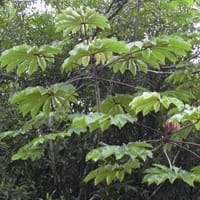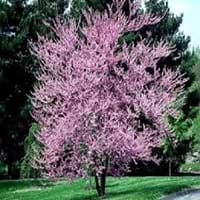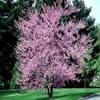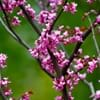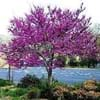Life Span
Perennial
Perennial
Origin
Mexico, Central America, South America
Northeastern United States, Mid-Atlantic United States, Southeastern United States, North-Central United States, Central United States, South-Central United States, Canada
Types
Tabebuia chrysotricha, Tabebuia impetiginosa
Not Available
Number of Varieties
Not Available
Habitat
Open Forest, Subtropical climates, tropical environments
Alpine Meadows, shaded woods
USDA Hardiness Zone
10-15
4-9
Sunset Zone
H1, H2, 24
1a, 1b, 2a, 2b, 3a, 3b, 7, 8, 9, 10, 11, 12, 13, 14, 15, 16, 17, 18, 19, 20
Habit
Upright/Erect
Oval or Rounded
Flower Color
Light Yellow, Gold
Red, Purple, Violet
Flower Color Modifier
Bicolor
Bicolor
Fruit Color
Ivory
Brown, Chocolate
Leaf Color in Spring
Green, Dark Green
Purple, Plum
Leaf Color in Summer
Dark Green
Green, Dark Green
Leaf Color in Fall
Dark Green
Yellow, Yellow green
Leaf Color in Winter
Dark Green
Not Available
Leaf Shape
Trumpet
Heart-shaped
Plant Season
Spring, Summer, Fall, Winter
Spring, Summer, Fall
Sunlight
Full Sun, Partial Sun
Full Sun, Partial Sun
Growth Rate
Not Available
Medium
Type of Soil
Loam, Sand
Clay, Loam, Sand
The pH of Soil
Acidic, Neutral
Acidic, Neutral, Alkaline
Soil Drainage
Well drained
Well drained
Bloom Time
Indeterminate
Early Spring, Spring, Late Spring
Tolerances
Cold climate, Drought, Shade areas, Variety of soil types
Drought
Where to Plant?
Ground
Ground
How to Plant?
Seedlings, Stem Planting
Cuttings
Plant Maintenance
Medium
Medium
Watering Requirements
Average Water Needs
Keep the ground moist but not water-logged
In Summer
Lots of watering
Lots of watering
In Spring
Moderate
Moderate
In Winter
Average Water
Average Water
Soil pH
Acidic, Neutral
Acidic, Neutral, Alkaline
Soil Type
Loam, Sand
Clay, Loam, Sand
Soil Drainage Capacity
Well drained
Well drained
Sun Exposure
Full Sun, Partial Sun
Full Sun, Partial Sun
Pruning
Prune lower leaves, Remove damaged leaves, Remove dead branches, Remove dead leaves
Prune to stimulate growth, Remove damaged leaves, Remove dead branches, Remove dead leaves
Fertilizers
All-Purpose Liquid Fertilizer
All-Purpose Liquid Fertilizer
Pests and Diseases
Aphids, Fungal Diseases, Mites, Red blotch, Root rot, Scale, Spider mites, Whiteflies
Bacterial Canker, Verticillium Wilt
Plant Tolerance
Cold climate, Drought, Shade areas, Variety of soil types
Drought
Flower Petal Number
Not Available
Single
Foliage Texture
Bold
Medium
Foliage Sheen
Glossy
Glossy
Allergy
no allergic reactions
Unknown
Aesthetic Uses
Showy Purposes
Beautification, Formal Garden, Ground Cover, Showy Purposes
Beauty Benefits
Not Available
Not Available
Environmental Uses
Air purification
Air purification, Food for animals, Food for birds, Nesting sites for birds
Medicinal Uses
Antibacterial, Diabetes, Hypotensive
Unknown
Part of Plant Used
Bark, Fruits, Leaves, Root
Not Applicable
Other Uses
Used for its medicinal properties
Beneficial species for attracting pollinators, Used as Ornamental plant
Used As Indoor Plant
No
No
Used As Outdoor Plant
Yes
Yes
Garden Design
Edible, Shade Trees, Tropical
Feature Plant, Foundation, Mixed Border, Shade Trees
Botanical Name
CECROPIA obtusifolia
CERCIS canadensis 'Forest Pansy'
Common Name
Trompetillo, Trumpet Tree
Eastern Redbud, Forest Pansy Redbud
In Hindi
तुरही ट्री
Forest Pansy Redbud
In German
Trompete Baum
Forest Pansy Redbud
In French
Trompette Arbre
gainier du Canada
In Spanish
Árbol de trompeta
Cercis canadensis
In Greek
τρομπέτα Tree
Forest Pansy Redbud
In Portuguese
Árvore de trombeta
Forest Pansy Redbud
In Polish
Trąbka Drzewo
Judaszowiec kanadyjski
In Latin
Tuba ligno
Forest Pansy Redbud
Phylum
Tracheophyta
Spermatophyta
Class
Magnoliopsida
Magnoliopsida
Family
Cecropiaceae
Fabaceae
Clade
Angiosperms, Eudicots, Rosids
Angiosperms, Eudicots, Rosids
Tribe
Not Available
Not Available
Subfamily
Cecropia obtusifolia
Not Available
Number of Species
Not Available
Importance of Trumpet Tree and Forest Pansy Redbud
Want to have the most appropriate plant for your garden? You might want to know the importance of Trumpet Tree and Forest Pansy Redbud. Basically, these two plants vary in many aspects. Compare Trumpet Tree and Forest Pansy Redbud as they differ in many characteristics such as their life, care, benefits, facts, etc. Every gardener must at least have the slightest clue about the plants he wants to plant in his garden. Compare their benefits, which differ in many ways like facts and uses. The medicinal use of Trumpet Tree is Antibacterial, Diabetes and Hypotensive whereas of Forest Pansy Redbud is Unknown. Trumpet Tree has beauty benefits as follows: Not Available while Forest Pansy Redbud has beauty benefits as follows: Not Available.
Compare Facts of Trumpet Tree vs Forest Pansy Redbud
How to choose the best garden plant for your garden depending upon its facts? Here garden plant comparison will help you to solve this query. Compare the facts of Trumpet Tree vs Forest Pansy Redbud and know which one to choose. As garden plants have benefits and other uses, allergy is also a major drawback of plants for some people. Allergic reactions of Trumpet Tree are no allergic reactions whereas of Forest Pansy Redbud have Unknown respectively. Having a fruit bearing plant in your garden can be a plus point of your garden. Trumpet Tree has showy fruits and Forest Pansy Redbud has no showy fruits. Also Trumpet Tree is not flowering and Forest Pansy Redbud is not flowering . You can compare Trumpet Tree and Forest Pansy Redbud facts and facts of other plants too.
